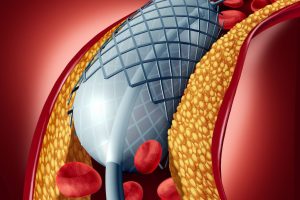
Prostate Artery Embolization
What is Prostate Artery Embolization?
Prostate cancer is the second leading cause of cancer-related deaths in men. In fact, nearly one out of every seven men will be diagnosed with prostate cancer at some point in their lifetime. If caught early enough, there are viable treatments that can be administered to help treat this disease. One such treatment is called a Prostate Artery Embolization.
Prostate artery embolization (PAE) is a minimally invasive procedure used to treat prostate cancer even if it is not curable. It’s also used to treat blood in the urine caused by benign prostatic hyperplasia (BPH) and other conditions related to the urogenital system. a non-surgical procedure, performed through a tiny pinhole in the skin. Advanced state-of-the-art imaging is used to guide a small catheter to the prostate arteries where tiny beads —the size of grains of sand — are released to block the blood flow to the prostate causing it to shrink & improve urine flow.
Benefits of Prostate Artery Embolization
- Reduced cancer symptoms: Men who undergo PAE often find that the treatments can help reduce their symptoms, including pain and urinary problems.
- Improved quality of life: Men who undergo PAE often find that the treatment helps them enjoy a better quality of life. Many men who undergo PAE report that they feel better, have less urinary problems, and have less pain.
- Increased survival: Men who undergo PAE often find that the treatment can help them live longer. Many doctors report that men who undergo PAE have an increased chance of survival.
- Less invasive: Men who undergo PAE often find that the treatment is less invasive than other treatments. This can make it easier for men to have the treatment and help them recover from the treatment faster.
- Fewer complications: Men who undergo PAE often find that the treatment has fewer complications than other treatments. This can help men avoid serious complications that could potentially occur as a result of other treatments.
How is Prostate Artery Embolization Performed?
The procedure involves inserting a catheter (a narrow tube) into the blood vessels of the groin. The catheter is then threaded up into the blood vessels that supply the prostate, where tiny particles are injected to block off the blood vessels. The treatment is done under local anesthesia, but you may be given a mild sedative to help you relax. The entire procedure may last from 30-60 minutes. You can usually go home the same day, though you may need to stay in the hospital overnight. You may experience mild pain or discomfort after the procedure, and the doctor may prescribe pain medications.
Potential Side Effects of Prostate Artery Embolization
- Bleeding: It’s possible that tiny blood vessels will break during the procedure, leading to bleeding. If this happens, you may need to have a blood transfusion.
- Urinary problems: Some men experience urinary problems, such as difficulty urinating or having urinary incontinence after the procedure. Wearing an elastic bandage around your abdomen can help reduce the pressure on your bladder, which may help reduce these symptoms.
- Infection: The catheter used during the procedure can introduce bacteria into your blood, which can lead to infection. You may be given antibiotics to help reduce the risk of infection.
- Long-term side effects: Some men experience long-term side effects after prostate artery embolization, but these are relatively rare. These include trouble having an erection and sexual problems.
This procedure is effective and minimally invasive, so while prostate cancer is a serious condition, it doesn’t have to be a death sentence. One of the best ways to reduce your risk of developing prostate cancer is to get screened regularly. Early detection can help you catch this disease before it becomes severe, which can make it easier to treat. If you have been diagnosed with prostate cancer, it’s important to understand your treatment options and to speak with us about the best course of action for you. Get back to living your best life sooner.



